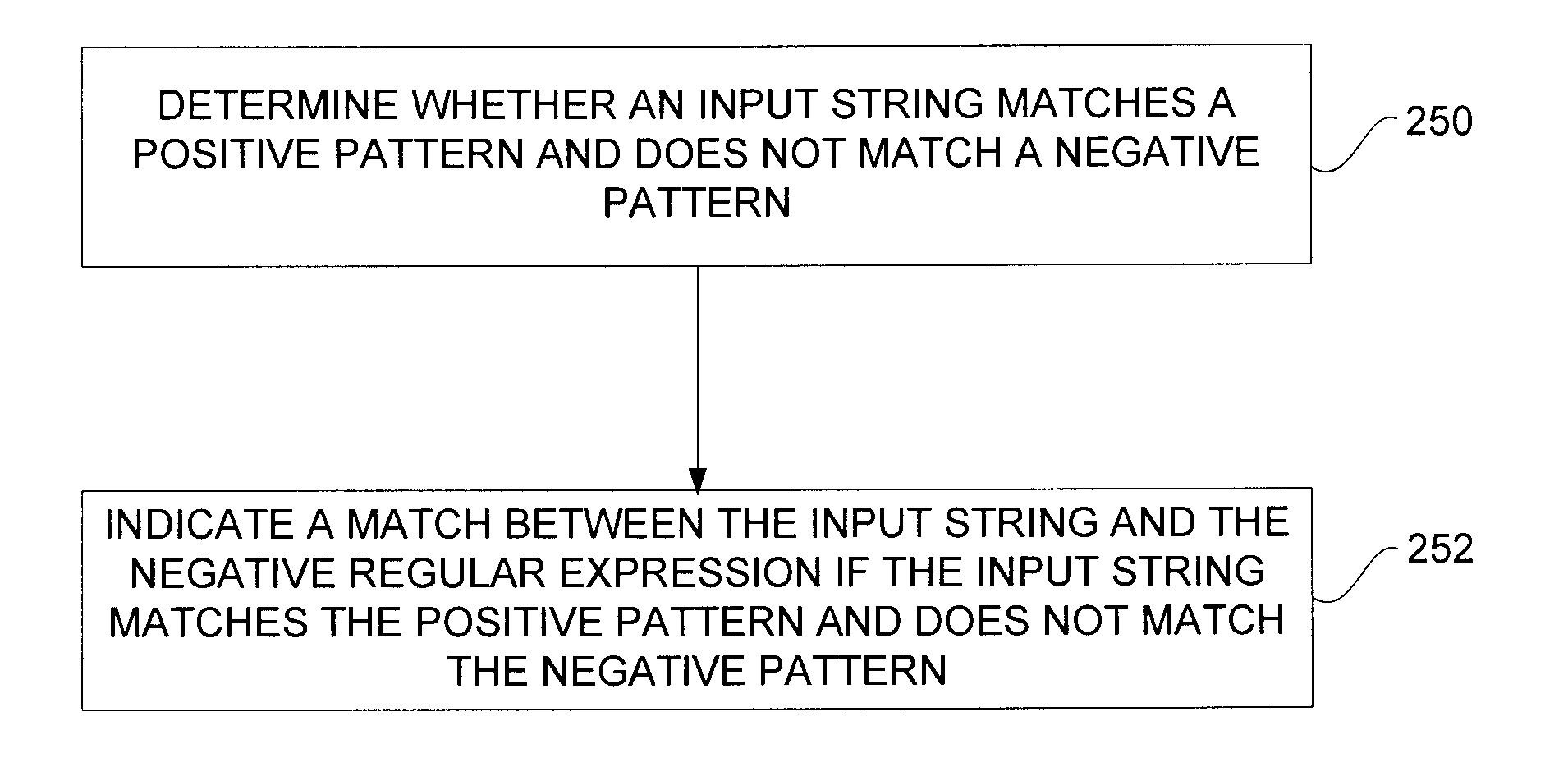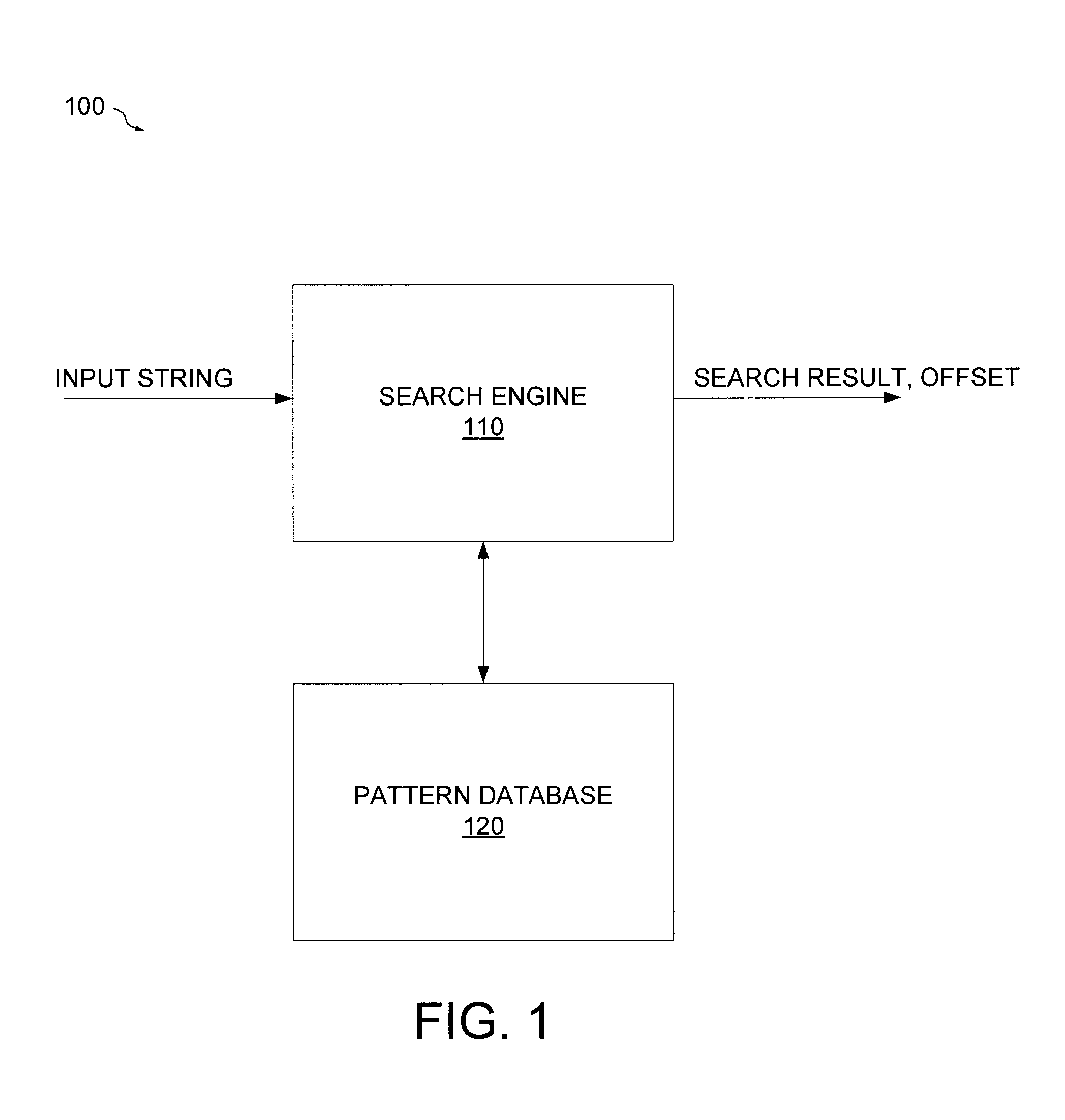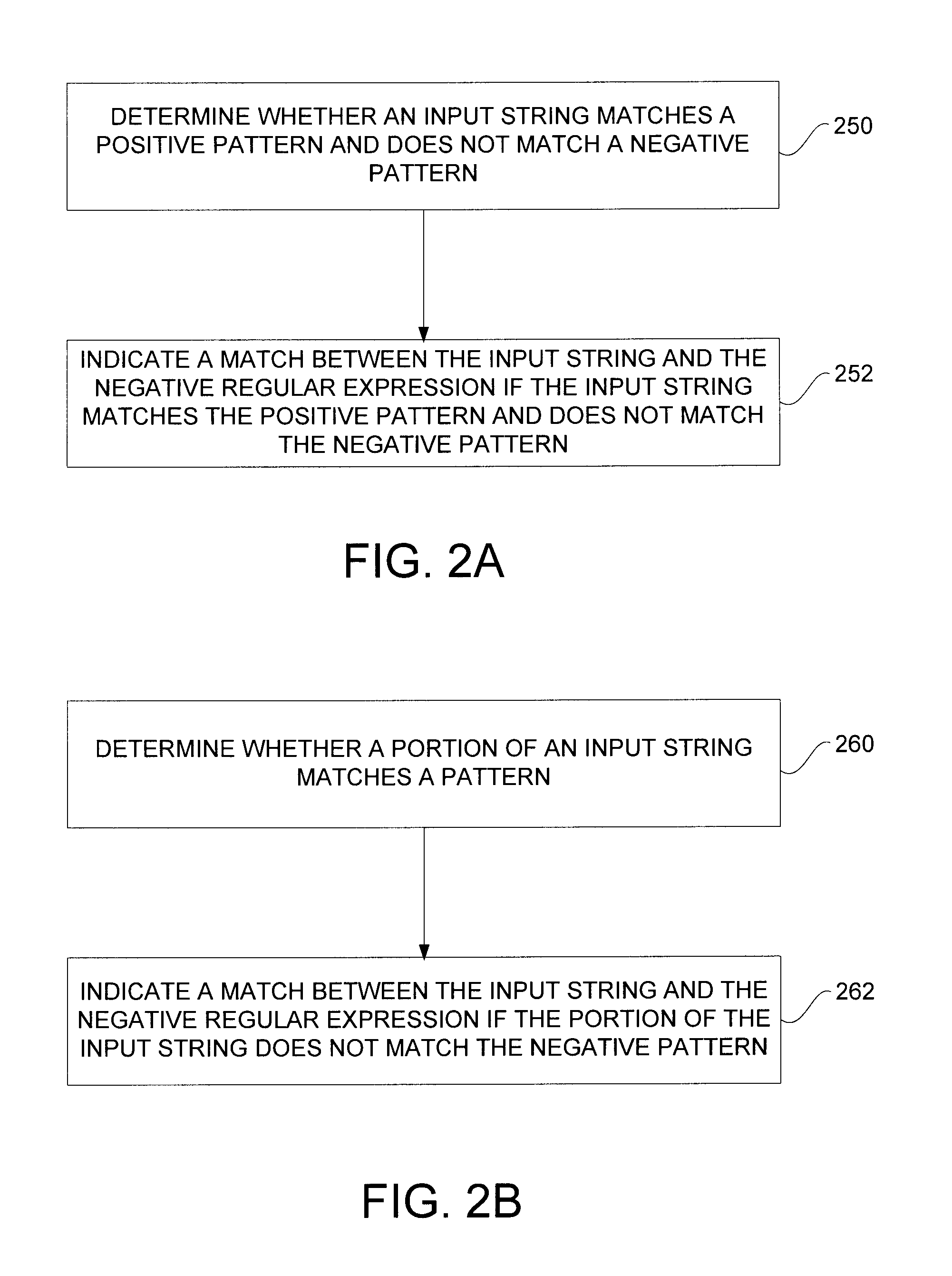Negative regular expression search operations
a regular expression and search operation technology, applied in the field of regular expression search operations, can solve the problems of consuming significant storage area, or even impossible, to use regular expressions to identify input strings that do not match certain criteria,
- Summary
- Abstract
- Description
- Claims
- Application Information
AI Technical Summary
Benefits of technology
Problems solved by technology
Method used
Image
Examples
example 1
^.*(?^abcd)$
[0025]Example 1 depicts a negative regular expression that includes the negative pattern “abcd” and includes no positive patterns. Content search system 100 will indicate that an input string matches the negative regular expression of Example 1 if the input string does not contain the pattern “abcd.” For example, the input string “netlogic” will match the negative regular expression of Example 1, while the input string “netlogicabcd” will not match the negative regular expression of Example 1.
[0026]The negative regular expression of Example 1 is expressed in the Perl programming language, although negative regular expressions may be expressed using any number of other languages. The Perl programming language shall be used in all examples in this application, as Perl is a language that is widely used for performing regular expression search operations.
[0027]The negative pattern “abcd” in Example 1 is identified as a negative pattern by virtue of a negative pattern identif...
example 2
aaaa.*(?^xxx)abcd
[0029]The negative regular expression of Example 2 includes the negative pattern “xxx” and the two positive patterns “aaaa” and “abcd.” An input string will match the negative regular expression of Example 2 if the input string does not contain the string “xxxx” between the strings “aaaa” and “abcd.” Thus, for an input string to match the negative regular expression of Example 2, the input string must contain both the positive patterns “aaaa” and “abcd” (in that order), but must not contain the negative pattern “xxx” between the two positive patterns. For example, the input strings “aaaanetlogicabcd” and “aaaaabcdxxx” will match the negative regular expression of Example 2, while the input string “aaaaxxxabcd” will not match the negative regular expression of Example 2.
[0030]FIG. 2A depicts the high-level functional steps content search system 100 performs in comparing an input string to the negative regular expression of Example 2. In step 250, content search syste...
example 3
^.{100}(?^abcd)
[0040]The negative regular expression of Example 3 includes the negative pattern “abcd.” Content search system 100 will indicate a match with an input string if the first 100 characters (e.g., bytes) of the input string do not match the negative pattern “abcd.” In this example, the first 100 bytes of the input string are identified by the quantifier {100}, although as explained above, any other character, token, or identifier may be used to identify a particular number of bytes or portion of an input string if it is recognized as such by the content search system.
[0041]FIG. 2B depicts the functional steps content search system 100 may perform in comparing an input string with the negative regular expression of Example 3. In step 260, content search system 100 determines whether a portion of an input string matches the negative pattern identified by the negative regular expression. In this example, content search system 100 determines whether the first 100 characters o...
PUM
 Login to View More
Login to View More Abstract
Description
Claims
Application Information
 Login to View More
Login to View More - R&D
- Intellectual Property
- Life Sciences
- Materials
- Tech Scout
- Unparalleled Data Quality
- Higher Quality Content
- 60% Fewer Hallucinations
Browse by: Latest US Patents, China's latest patents, Technical Efficacy Thesaurus, Application Domain, Technology Topic, Popular Technical Reports.
© 2025 PatSnap. All rights reserved.Legal|Privacy policy|Modern Slavery Act Transparency Statement|Sitemap|About US| Contact US: help@patsnap.com



